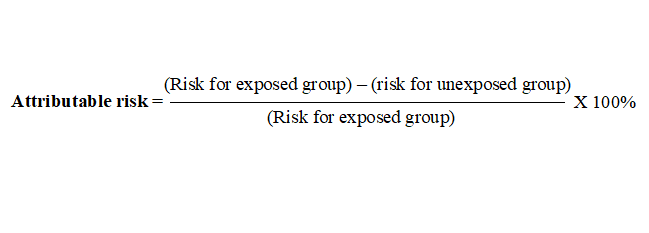Prospective or cohort studies are an observational analytic epidemiological study in which the starting point is the selection of a study population known as cohort. In this type of study, the investigator selects participants exclusively on the basis of their exposure status which is in contrast to retrospective studies where participants are selected on the basis of their disease status.
Cohort studies can also be called, longitudinal, follow-up or incidence studies. This study usually starts with a group of people who are free from a disease and, who are eventually classified into different groups according to their exposure to a potential cause of the disease. In prospective study, the cohorts (who are considered to be free from a given disease but vary in their exposure to a likely cause) are divided into different groups according to a possible disease outcome or cause.
Then the investigator follows up the cohorts in time to see who will develop the disease being studied. Such approach allows the researcher to know how the subsequent development of new cases of the disease varies between the groups exposed and those that where unexposed. Cohort study is a more straightforward type of epidemiological investigation and, it gives valid information about the risk of developing a disease and the possible cause of the disease.
It is a futuristic or forward type of epidemiological study unlike case-control (retrospective) study which studies disease retrospectively (i.e. in a backward trend). A cohort study can be prospective-cohort, retrospective-cohort or a combination of both prospective-cohort and retrospective-cohort study depending on the prevailing scenario of the disease/or population under study. The point estimate (or comparison of disease incidence among exposed and unexposed groups) in a cohort study is expressed as the relative risk (RR).
Other measures of disease frequency and risk measured by cohort studies includes: prevalence, incidence and attributable risk. Relative Risk (RR) which can also be known as the risk ratio (RR) is defined as the ratio of disease risk in an exposed population to disease risk in an unexposed population (Table 1).
RR is mathematically or statistically expressed as: RR = A1/A0.
Where: A1 (numerator) = disease risk in exposed population
A0 (denominator) = disease risk in unexposed population
RR can be generated by constructing a 2×2 table as shown in Table 28.2.
Table 1. Relative-Risk (RR) Table
| cohort | Disease | Total | |
| Yes | No | ||
| Exposed population | A | B | ab |
| Unexposed population | C | D | cd |
RR = 2: means that disease occurrence is 2 times more likely in exposed group than in non-exposed group.
RR = 1: meansno effect of exposure to disease risks.
Cohort (prospective) studies are not without some advantages or disadvantages
Attributable risk is a measure of the public health impact of a causative factor of a disease in a population. It is the percentage of disease in an exposed group attributable to the exposure and, it indicates the expected reduction in a disease if the exposure never existed or could be removed. Attributable risk shows how much greater the occurrence of the disease is in one group when compared to the other group. Attributable risk or proportion is given by the formular below:

MERITS OF PROSPECTIVE STUDIES
- They study more than one effect of disease exposure.
- They have more control over selection of participants in the study.
- They complete information about a disease based on cases, stages and exposure rate.
- They are a powerful epidemiological study than the others when implemented accurately.
- They can calculate and compare rates and risks of a disease.
DEMERITS OF PROSPECTIVE STUDIES
- They are very expensive to undertake.
- They usually take a long period of time to execute because of their futuristic nature.
- There is bias when the follow-up is not maintained and sustained.
- It usually involves a large sample size of a population.
- It cannot be used to study rare diseases.
- The mechanism of a disease cannot be studied with a cohort study.
References
Aschengrau A and Seage G.R (2013). Essentials of Epidemiology in Public Health. Third edition. Jones and Bartleh Learning,
Aschengrau, A., & G. R. Seage III. (2009). Essentials of Epidemiology in Public Health. Boston: Jones and Bartlett Publishers.
Bonita R., Beaglehole R., Kjellström T (2006). Basic epidemiology. 2nd edition. World Health Organization. Pp. 1-226.
Brooks G.F., Butel J.S and Morse S.A (2004). Medical Microbiology, 23rd edition. McGraw Hill Publishers. USA.
Castillo-Salgado C (2010). Trends and directions of global public health surveillance. Epidemiol Rev, 32:93–109.
Centers for Disease Control and National Institutes of Health (1999). Biosafety in Microbiological and Biomedical Laboratories, 4th edn, Washington DC: CDC.
Gordis L (2013). Epidemiology. Fifth edition. Saunders Publishers, USA.
Guillemin J (2006). Scientists and the history of biological weapons. European Molecular Biology Organization (EMBO) Reports, Vol 7, Special Issue: S45-S49.
Porta M (2008). A dictionary of epidemiology. 5th edition. New York: Oxford University Press.
Rothman K.J and Greenland S (1998). Modern epidemiology, 2nd edition. Philadelphia: Lippincott-Raven.
Rothman K.J, Greenland S and Lash T.L (2011). Modern Epidemiology. Third edition. Lippincott Williams and Wilkins, Philadelphia, PA, USA.
Discover more from Microbiology Class
Subscribe to get the latest posts sent to your email.





